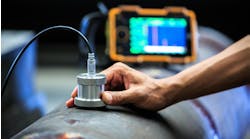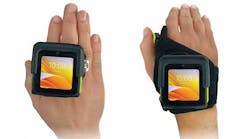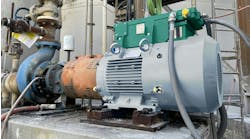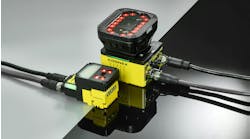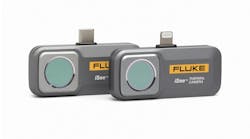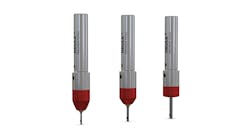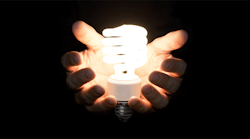Many employees take pride in personalizing their workspace. But while it’s not uncommon to see desks littered with action figures or cubicle walls cluttered with pictures, few people give much thought to the light around them. The intensity and type of light we live with during the workday can have a major impact on our health, happiness, and productivity. Even if you have little choice but to deal with the overhead fluorescents in a windowless office, there are still several steps you can take to make the light work for you.
Use Blue Light for a Pretask Brain Boost
When it comes to the way our brains respond to light, not all colors are created equal. Our eyes are populated with a special set of cells—photosensitive retinal ganglion cells, to be precise—that detect the presence of short-wavelength blue hues. These cells use this information to tell our bodies and brains that the sun is out, suppressing the sleep-inducing hormone melatonin.
While this awakening effect is a good reason to put away your phone before bed (LCD screens are basically blue light-blasting machines), it can also be exploited for a midday brain boost. Exposure to blue light can improve alertness, attentiveness, and even your mood.
In fact, a new study published by the journal Sleep suggests that exposure to blue light prior to taking on an important task could be an effective way to improve performance. Researchers found that being around a blue light in an otherwise darkened room allowed subjects to complete cognitive tasks faster than a control group, without sacrificing accuracy for speed. Remarkably, the effect remained in place for more than a half hour after exposure to the blue light ended.
“What these findings mean is that we might be able to use blue light in situations where alertness and quick responding are really important, such as pilot cockpits,” says Anna Alkozei, Ph.D., a postdoctoral fellow at the University of Arizona Department of Psychiatry and the study’s lead authors. ”We might even be able to use blue light as a way to enhance attention 30 minutes before having to engage in a task that requires high levels of alertness, such as a testing situation.”
Of course, more light isn’t always better. A 2013 study published in the Journal of Environmental Psychology suggests that, while bright lights can make workers more alert, dim lights can make them more creative and trigger a “risky, explorative processing style.”
Work Near a Window for Better Health
A window-wrapped office isn’t just a sign of status—it could also be a sign of health. Employees who are around more light (especially natural light) during the day are more likely to be healthier and maintain a good mood, according to a 2014 study published in the Journal of Clinical Sleep Medicine. Two surprising findings: Test participants with windows in their offices got a startling 46 minutes more sleep per night than their natural light-starved counterparts and even reported getting more exercise after work.
“Light also can affect the metabolism and efficiency of how your body utilizes food, which can be important for weight,” said Phyllis Zee, MD, Ph.D., director of the Sleep Disorders Center at Northwestern Memorial Hospital, and one of the study’s authors.
Not blessed with a window to the outside world? Zee suggests increasing the intensity of overhead light, getting a desktop light box such as those used for Seasonal Affective Disorder, taking an occasional walk to a window, or simply stepping outside.
Beware the Glare
One downside of blasting your workspace with light? Eye-straining glare.
“Beyond just causing extremes of discomfort, research suggests glare in a workspace decreases productivity,” said Brent Protzman, manager of energy information and analytics at Lutron, which manufacturers lighting and shade systems. ”It’s about not being able to see the screen and constantly readjusting your head. Basically, anything that distracts you or causes a momentary lapse in focus is going to take some time getting readjusted.”
Protzman suggests positioning monitors in places that minimize window or overhead glare, giving employees individual control over lighting and shades in their work stations, and avoiding what he calls the “cave effect," whereby you have a single bright spot in an otherwise dark room. After all, even if those childhood warnings that staring at a screen in the dark can cause blindness aren’t exactly true, it’s still anything but easy on the eyes.
